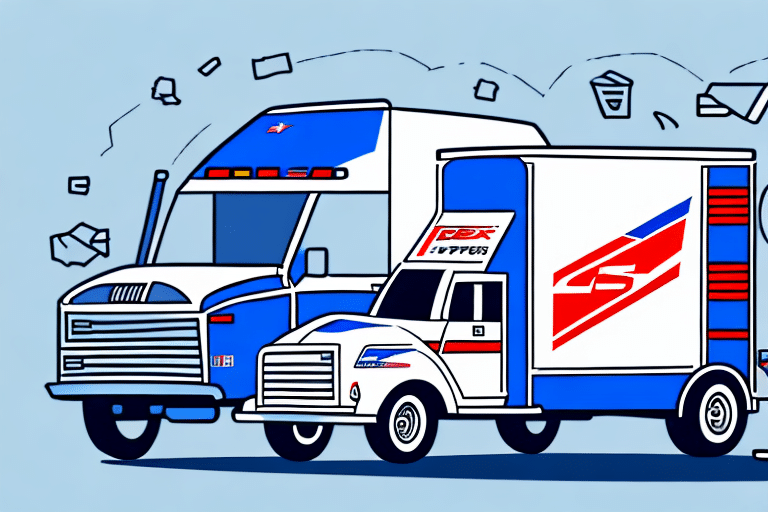What Is Cheaper: USPS or FedEx?
When it comes to shipping services, two of the most popular options are USPS and FedEx. The main consideration for most users of these services is cost. Which shipping method is cheapest? Let's explore this question in detail.
Comparing Shipping Rates and Services
First, let's compare the shipping rates for USPS and FedEx. USPS offers a variety of shipping options, including Priority Mail, First-Class Mail, and Parcel Select. FedEx provides comparable services such as FedEx Ground, FedEx Express, and FedEx SmartPost.
USPS Shipping Options
- First-Class Mail: Ideal for small packages under 1 pound.
- Priority Mail: Suitable for packages over 1 pound, offering delivery in 1-3 business days.
- Parcel Select: Cost-effective for large or heavy packages with longer delivery times.
FedEx Shipping Options
- FedEx Ground: Best for heavier packages with delivery typically in 2-7 business days.
- FedEx Express: Offers overnight and 2-day delivery options for time-sensitive shipments.
- FedEx SmartPost: Combines FedEx’s ground network with the U.S. Postal Service for residential deliveries.
It's important to note that shipping rates may vary depending on the destination, package weight, and dimensions. Always use an online shipping calculator to compare costs between USPS and FedEx for your specific package. Tools like the USPS Shipping Calculator and the FedEx Rate Tools can assist in this comparison.
Value for Money: USPS vs. FedEx
When evaluating value for money, several factors come into play beyond just the base shipping rates. While USPS may be cheaper for smaller packages, FedEx typically offers faster shipping times and more comprehensive tracking options.
Delivery Speed and Reliability
USPS Priority Mail generally delivers within 1-3 business days, making it a reliable choice for most domestic shipments. On the other hand, FedEx Ground offers delivery within 2-7 business days, while FedEx Express provides options for overnight and 2-day deliveries, ensuring faster service for urgent packages.
Tracking and Insurance
FedEx offers detailed tracking for all shipments, including real-time updates and delivery confirmations. USPS provides tracking as well, but it may not be as granular as FedEx's system. Both services offer insurance options: USPS includes up to $50 in insurance with Priority Mail, while FedEx includes up to $100 in basic insurance for free, with additional coverage available at extra cost.
Pros and Cons of USPS vs. FedEx
Understanding the advantages and limitations of each service can help you make an informed decision based on your specific needs.
USPS Pros and Cons
- Pros:
- Cheaper for small and lightweight packages.
- Extensive network with over 31,000 retail locations.
- Free residential delivery.
- Cons:
- Longer delivery times for some services.
- Limited tracking compared to FedEx.
- Size and weight restrictions on packages.
FedEx Pros and Cons
- Pros:
- Faster delivery options, including overnight and two-day services.
- Comprehensive tracking and reliable delivery.
- Better for larger and heavier packages.
- Cons:
- Generally more expensive than USPS for smaller packages.
- Fewer retail locations compared to USPS.
- Additional fees for certain services like residential delivery.
Affordability for Small Businesses
For small businesses, shipping cost is a critical factor. USPS may be the more affordable option for shipping smaller packages, especially for businesses that ship frequently and can take advantage of bulk discounts. According to the PwC Shipping Report 2023, businesses can save significantly by optimizing their shipping methods.
USPS for Small Businesses
- Affordable rates for small and lightweight packages.
- Flat rate boxes simplify pricing for standard sizes.
- Bulk shipping discounts available through the USPS Business Pricing program.
FedEx for Small Businesses
- Competitive rates for larger and heavier shipments.
- Volume discounts and business accounts offer reduced rates.
- Enhanced tracking and reliability can improve customer satisfaction.
Tips for Saving Money on Shipping with USPS or FedEx
There are several strategies to reduce shipping costs with both USPS and FedEx:
- Use Online Services: Both USPS and FedEx offer discounts for online label printing and payment. Utilizing these services can lead to significant savings.
- Choose Slower Shipping Options: Selecting ground or standard shipping can lower costs compared to expedited services.
- Utilize Flat-Rate Packaging: USPS's flat-rate boxes allow you to ship items at a fixed cost, regardless of weight (up to 70 lbs) and distance.
- Optimize Package Size and Weight: Reducing the size and weight of your packages can decrease shipping costs. Use appropriate packaging materials to avoid unnecessary bulk.
- Compare Rates: Always compare shipping rates between USPS and FedEx for each package to determine the most cost-effective option. Tools like the Shipping Calculator can assist in making informed decisions.
- Consider Third-Party Shipping Services: Services like Shippo or ShipStation can negotiate better rates with USPS and FedEx on your behalf, potentially lowering your shipping costs.
Understanding Pricing Structures Between USPS and FedEx
Understanding how each carrier structures their pricing is essential for determining the most economical choice for your shipping needs.
USPS Pricing Structure
- Flat Rate Pricing: Offers flat rates for specific box sizes, beneficial for heavy items.
- Zone-Based Pricing: Rates are determined based on the distance the package travels.
- Volume Discounts: Available for businesses that ship large volumes through USPS business accounts.
FedEx Pricing Structure
- Weight and Dimension-Based Pricing: Charges based on the package's weight and dimensions.
- Zone-Based Pricing: Similar to USPS, FedEx rates vary based on the shipping distance.
- Volume Discounts: FedEx offers substantial discounts for businesses that commit to shipping large volumes.
By carefully evaluating the pricing structures of both services, businesses and individuals can choose the option that provides the best value based on their specific shipping requirements.
Hidden Costs of Using USPS vs. FedEx
While both USPS and FedEx offer competitive shipping rates, there may be hidden costs associated with using these services:
- Fuel Surcharges: Both carriers apply fuel surcharges that can fluctuate based on current fuel prices.
- Residential Delivery Fees: FedEx charges additional fees for residential deliveries, whereas USPS includes this in their standard service.
- Packaging Costs: Although both services offer free packaging options, specialized or additional packaging materials may incur extra costs.
- Insurance Fees: Additional insurance beyond the basic coverage is available at an extra cost, particularly for high-value items.
- Claim Processing: In cases of lost or damaged packages, filing claims can be time-consuming and may require additional documentation.
It's important to account for these potential hidden costs when budgeting for shipping to avoid unexpected expenses.
Conclusion
Determining whether USPS or FedEx is cheaper for shipping depends on a variety of factors, including package size, weight, destination, and urgency. By carefully evaluating your specific shipping needs and comparing rates and services from both options, you can make an informed decision and optimize your shipping costs.
Consider not only the pricing structures but also the delivery options and timelines that best fit your needs. Utilizing available tools and resources can help ensure that you choose the most cost-effective and reliable shipping service for your requirements.






















